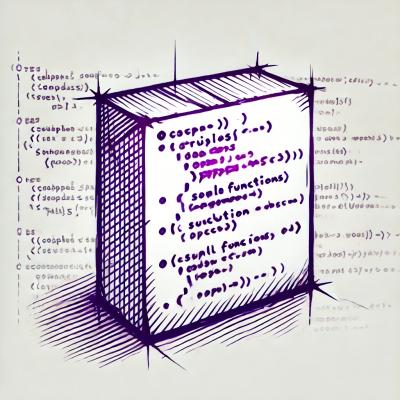conf 
Simple config handling for your app or module
All you have to care about is what to persist. This module will handle all the dull details like where and how.
If you need this for Electron, check out electron-store instead.
Install
$ npm install conf

Usage
const Conf = require('conf');
const config = new Conf();
config.set('unicorn', '🦄');
console.log(config.get('unicorn'));
config.set('foo.bar', true);
console.log(config.get('foo'));
config.delete('unicorn');
console.log(config.get('unicorn'));
Or create a subclass.
API
Changes are written to disk atomically, so if the process crashes during a write, it will not corrupt the existing config.
Conf([options])
Returns a new instance.
options
defaults
Type: Object
Default config.
configName
Type: string
Default: config
Name of the config file (without extension).
Useful if you need multiple config files for your app or module. For example, different config files between two major versions.
projectName
Type: string
Default: The name field in the package.json closest to where conf is imported.
You only need to specify this if you don't have a package.json file in your project.
cwd
Type: string
Default: System default user config directory
You most likely don't need this. Please don't use it unless you really have to.
Overrides projectName.
The only use-case I can think of is having the config located in the app directory or on some external storage.
encryptionKey
Type: string Buffer TypedArray DataView
Default: undefined
Note that this is not intended for security purposes, since the encryption key would be easily found inside a plain-text Node.js app.
Its main use is for obscurity. If a user looks through the config directory and finds the config file, since it's just a JSON file, they may be tempted to modify it. By providing an encryption key, the file will be obfuscated, which should hopefully deter any users from doing so.
It also has the added bonus of ensuring the config file's integrity. If the file is changed in any way, the decryption will not work, in which case the store will just reset back to its default state.
When specified, the store will be encrypted using the aes-256-cbc encryption algorithm.
fileExtension
type: string
Default: json
Extension of the config file.
You would usually not need this, but could be useful if you want to interact with a file with a custom file extension that can be associated with your app. These might be simple save/export/preference files that are intended to be shareable or saved outside of the app.
projectSuffix
Type: string
Default: nodejs
You most likely don't need this. Please don't use it unless you really have to.
Suffix appended to projectName during config file creation to avoid name conflicts with native apps.
You can pass an empty string to remove the suffix.
For example, on macOS, the config file will be stored in the ~/Library/Preferences/foo-nodejs directory, where foo is the projectName.
Instance
You can use dot-notation in a key to access nested properties.
The instance is iterable so you can use it directly in a for…of loop.
.set(key, value)
Set an item.
The value must be JSON serializable.
.set(object)
Set multiple items at once.
.get(key, [defaultValue])
Get an item or defaultValue if the item does not exist.
.has(key)
Check if an item exists.
.delete(key)
Delete an item.
.clear()
Delete all items.
.onDidChange(key, callback)
callback: (newValue, oldValue) => {}
Watches the given key, calling callback on any changes. When a key is first set oldValue will be undefined, and when a key is deleted newValue will be undefined.
.size
Get the item count.
.store
Get all the config as an object or replace the current config with an object:
conf.store = {
hello: 'world'
};
.path
Get the path to the config file.
FAQ
How is this different from configstore?
I'm also the author of configstore. While it's pretty good, I did make some mistakes early on that are hard to change at this point. This module is the result of everything I learned from making configstore. Mainly where config is stored. In configstore, the config is stored in ~/.config (which is mainly a Linux convention) on all systems, while conf stores config in the system default user config directory. The ~/.config directory, it turns out, often have an incorrect permission on macOS and Windows, which has caused a lot of grief for users.
Related
- electron-store - Simple data persistence for your Electron app or module
- cache-conf - Simple cache config handling for your app or module
License
MIT © Sindre Sorhus




